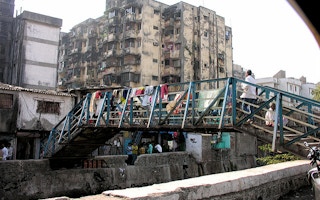Once known as Temple City for its ancient Hindu temples, Bhubaneswar in the eastern Indian state of Odisha aims to reposition itself as a hub for technology and healthcare with funding from a government programme to modernise cities.
It is one of 100 Smart Cities Prime Minister Narendra Modi has vowed to create by 2022 that will have internet connectivity, uninterrupted power and water supply, efficient public transport and living standards comparable to Europe.
But India’s drive to overhaul its cities to accommodate a growing population of migrants will force tens of thousands of people from their slum homes as city planners spruce up central business districts and build metro train lines, activists say.
“We have no choice. If we stay, the government will forcefully evict us,” said Ananda Chandra Parida, who has lived since 2007 in Bhubaneswar’s Kargil slum, home to 2,000 families.
“The houses they are building for us are small, and many of us cannot afford them,” said Parida, 40, who lives in a two-room brick house with his wife and two children.
Government officials say India’s cities - 13 of which are among the 20 most polluted in the world - desperately need the $7.5 billion makeover.
“
We have no choice. If we stay, the government will forcefully evict us.
Ananda Chandra Parida, resident, Bhubaneswar’s Kargil slum
About a third of the country’s 1.25 billion population lives in cities with numbers growing every year as tens of thousands of migrants leave their villages to seek better prospects in urban areas.
Many migrants end up in overcrowded slums, lacking basic facilities. Activists say the Smart Cities Mission is neglecting the needs of millions of people like them.
“(The plan) will only benefit a few and exclude the most vulnerable from the resources they so badly need,” Rajendra Ravi of the National Alliance of People’s Movements (NAPM), an umbrella organisation of rights groups, told the Thomson Reuters Foundation.
Fancy enclaves
About 65 million people live in India’s slums, according to 2011 census data, which activists say is a low estimate.
Most cities that have submitted development proposals in order to be picked as a Smart City, plan on spending more than 70 per cent of funds on developing an area for the benefit of only about 4 per cent of the city’s population, said Bhanu Joshi, a researcher at the Centre for Policy Research in Delhi.
“It’s a very exclusionary plan that doesn’t take into account everyone who makes up an urban space,” Joshi said.
“Simply monetising the land and building fancy enclaves does not make a city inclusive or sustainable or smart.”
Government officials, who have unveiled 60 Smart Cities so far, say the project will boost investment and create millions of jobs.
In Bhubaneswar, campaigners say about 50,000 slum dwellers will be evicted, many of whom will also lose their livelihoods.
There have also been demolitions and evictions in slums in the cities of Indore and Bhopal in the central state of Madhya Pradesh, which were named as Smart Cities. About 1,200 families were evicted in Indore, according to NAPM.
City officials in Bhubaneswar defended the plan.
“Our plan is very inclusive,” said Krishan Kumar, vice chairman of Bhubaneswar Development Authority.
“We are planning 6,000 units of affordable housing which would be allotted to them near their locality at a highly subsidised rate,” he said, without specifying how slum dwellers will pay 150,000 rupees ($2,256) for each of these homes.
Random spots
In the hill city of Dharamsala, which was also picked as a Smart City, about 300 families were evicted from the Charan Khad settlement in June. Most were low-caste Dalits and indigenous people who had lived there for 30 years.
“In a smart city, the poor have no role,” said Bipin Bharadwaj, an activist with Lok Raj Sangathan in Dharamsala.
The city’s mayor told reporters there was no option but to relocate residents, that due process was followed, and that they had been given enough time to make alternative arrangements.
Even when slum dwellers are offered accommodation, officials are applying an eligibility criteria based on the number of years spent there, thus excluding many, NAPM’s Ravi said.
“They just want us to go far away. They don’t want huts in the city area,” said Ramesh Kumar, a cobbler who had lived in Charan Khad and now rents a tiny room in town.
“You want to make a smart city and you think we look poor and are dirty; where should we go?” he said.
($1 = 66.479 Indian rupees)
This story was published with permission from Thomson Reuters Foundation, the charitable arm of Thomson Reuters, that covers humanitarian news, women’s rights, trafficking, corruption and climate change. Visit news.trust.org to see more stories.










